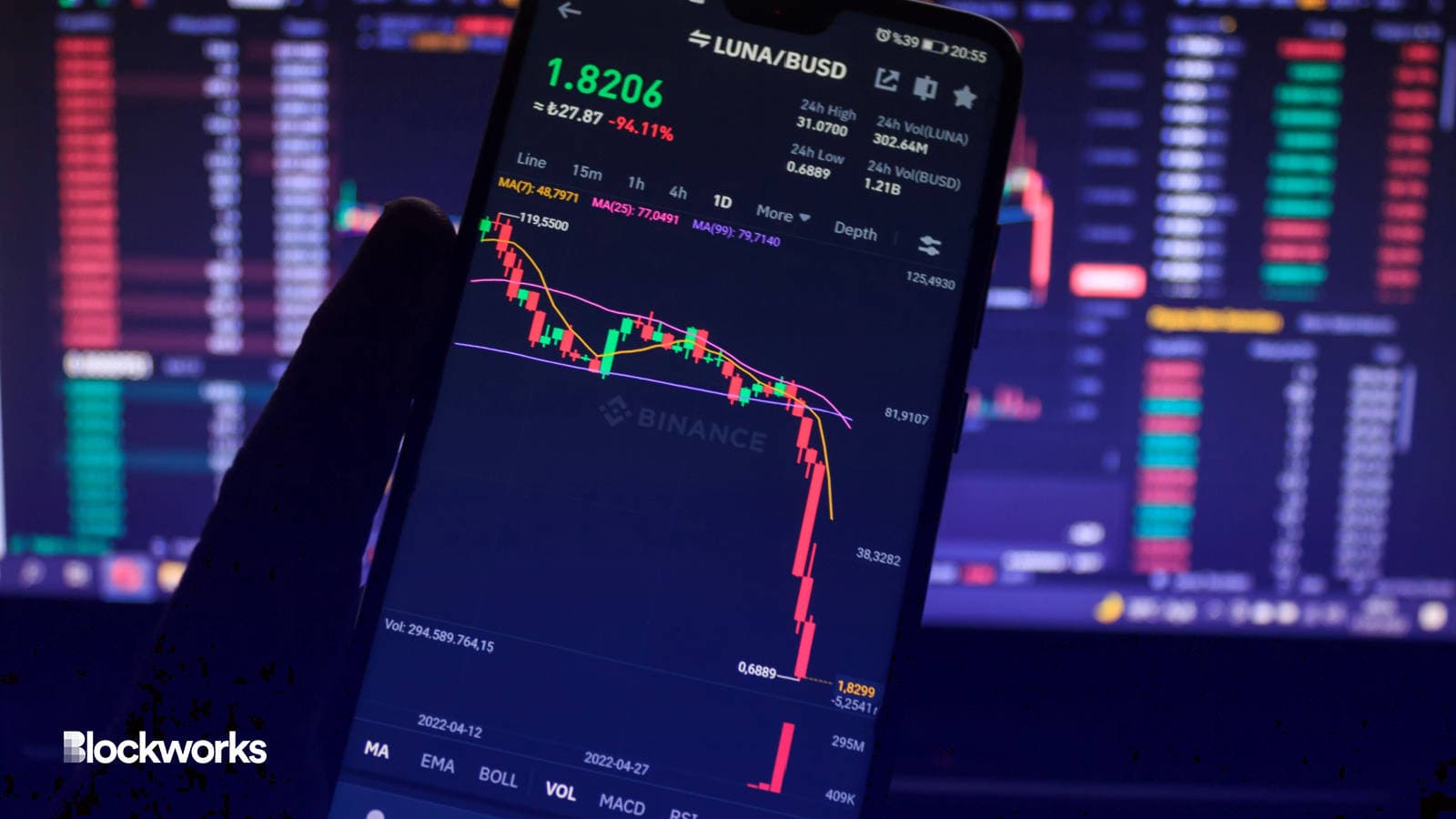Jump Earned $1.3B By Manipulating Terra, Lawsuit Alleges
A class action lawsuit alleges Jump Trading was heavily involved in maintaining the dollar peg of failed algorithmic stablecoin Terra

Hasbi Sahin/Shutterstock, modified by Blockworks
Jump Trading is facing a fresh class action lawsuit that accuses the firm of purchasing substantial quantities of algorithmic stablecoin UST to manipulate its value toward $1, thereby misleading investors about its true price and risks associated with the token.
The Chicago trading giant allegedly played a role in aiding and abetting a fraudulent scheme involving Terra, resulting in financial losses of at least $40 billion for investors who put their money into related cryptocurrencies, per the class-action.
New Jersey-based resident Taewoo Kim filed the lawsuit on May 9 on behalf of affected investors, claiming that Jump Trading was an early partner and financial supporter of Terraform Labs.
Starting around Nov. 2019, negotiations between former Terraform CEO Do Kwon and Jump were said to result in a series of agreements.
As part of these, TFL loaned 30 million LUNA tokens to Jump, enabling them to provide market-making services for LUNA and UST, according to the lawsuit. In return, Jump was entitled to compensation, which included receiving LUNA tokens at a significantly discounted rate, it’s alleged.
Subsequently, the value of UST experienced an unexpected decline and fell below $1 on May 19, 2021, plunging by 10% — about one year before Terra’s cataclysmic implosion, when it crashed to zero.
The lawsuit alleges that not long after, on May 23 that year, Kwon and Jump conspired to artificially inflate the prices of UST and aUST (a token used on Terra’s lending platform, Anchor). This was apparently accomplished through Jump’s covert purchase of large quantities of UST, temporarily restoring the false appearance of UST’s $1 peg.
‘Unnamed US trading firm’ cited in SEC indictment
The lawsuit alleges TFL, Jump and Jump Crypto President Kanav Kariya misrepresented UST’s “re-peg” as restored by TF ofL’s algorithm, misleading the market about UST’s value and risks.
Supporting claims made in Kwon’s criminal SEC indictment filed in Feb., it’s worth noting that he allegedly sought assistance from an unnamed US trading firm to manipulate the market price of UST. Taewoo Kim’s lawsuit speculates the unnamed firm is Jump Trading.
The lawsuit specifically claims between May 23 and May 27, 2021, Jump Trading engaged in significant net purchases of over 62 million UST tokens. These trades were conducted across multiple cryptocurrency trading platforms in order to conceal Jump’s manipulative actions.
To compensate Jump for its supposedly secret manipulation of UST and aUST, TFL agreed to transfer 61.4 million LUNA to Jump at a fixed price of $0.40 per token under an agreement signed July 2021. The arrangement was to remain in effect for the next four years, regardless of LUNA’s actual market value, which sometimes exceeded $90 per token in secondary markets.
As a result of this scheme, Jump is said to have made a staggering profit of more than $1.28 billion by selling the heavily discounted LUNA tokens it had acquired through the modified agreement.
Blockworks has not verified the veracity of the allegations contained within the lawsuit and makes no claims of wrongdoing. We’ve reached out to Jump and Kariya for comment.
The lawsuit reads: “Plaintiff’s allegations are based upon personal knowledge as to himself and his own acts, and upon information and belief as to all other matters based on the investigation conducted by and through Plaintiff’s attorneys, which investigation included, among other things, a review of the whitepaper of the digital assets at issue, press releases, media reports, and other publicly disclosed reports and information about Defendants.”
Jump reportedly less keen on crypto these days
Despite constant allegations, Kwon himself has denied the possibility of manipulation.
The lawsuit pointed out a series of tweets from Kwon on May 23, 2021, in which he dismissed allegations of UST price manipulation.
The lawsuit further claims that the defendants continued to hide their misconduct even after the collapse of UST in May 2022.
Kim claims he made purchases of UST and aUST at a time when the prices had been manipulated by Jump. He seeks appropriate damages to be determined at trial.
Jump Trading’s crypto division is reportedly scaling back its operations in the US market due to increased regulatory actions targeting the crypto industry, Bloomberg reported on May 10.
The firm is still said to be in the game of market-making, albeit on a smaller scale, but doesn’t plan to ditch crypto entirely.
Get the news in your inbox. Explore Blockworks newsletters:
- The Breakdown: Decoding crypto and the markets. Daily.
- 0xResearch: Alpha in your inbox. Think like an analyst.






